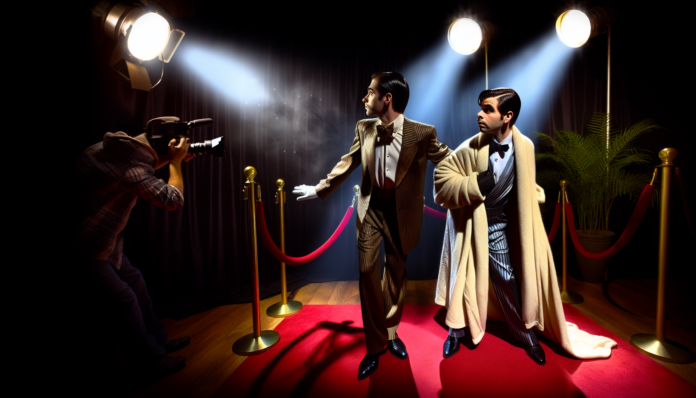Introduction
Cary Grant and Randolph Scott, two of Hollywood’s golden age icons, shared a companionship that has sparked decades of speculation and intrigue. Their friendship, which began in the 1930s, was marked by an undeniable chemistry and has often drawn whispers of romance. At a time when society upheld strict moral codes, their bond became a fascinating scandal that challenges our understanding of relationships and sexuality within the film industry.
The 1930s and 1940s were characterized by post-Depression values coupled with the burgeoning yet conservative landscape of Hollywood. With the Hays Code enforcing strict guidelines on depiction of sexuality and morality in films, any deviation from societal norms was not just frowned upon but often resulted in serious repercussions.
The Scandal
Cary Grant and Randolph Scott met in 1932 while working together on the film “Ned McCobb’s Daughter.” The rumor mill began churning in earnest when the two began leasing a home together in the late ’30s. They lived in a Santa Monica Beach house, where they often entertained many of Hollywood’s elite. Their close friendship was illuminated by their public personas, characterized by a playful camaraderie and frequent public appearances, including the famed “Hollywood Canteen” during World War II, where they volunteered to entertain troops.
While much of the early speculation stemmed from their living arrangements, the most talked-about aspects of their companionship emerged from intimate photographs and stories shared by those close to them. Several publications, including Confidential and Hush-Hush, hinted at a deeper relationship, describing them as lovers rather than mere friends. A notable quote from famed gossip columnist Louella Parsons stated, “There’s no smoke without fire,” hinting at the underlying truth many refused to acknowledge.
Reactions at the Time
The responses to Grant and Scott’s companionship were polarized. Some fans supported their friendship, praising their apparent bond and mutual respect, while others attacked them, labeling their closeness as scandalous. Given the conservative attitudes of the era, many were quick to dismiss any notion of a same-sex relationship. The backlash against perceived immorality often led to job losses and reputational damage for Hollywood stars, standing as a cautionary tale for actors of the period.
Moral and Cultural Analysis
At the heart of the public scandal was a reflection of deeply rooted societal norms. In the early 20th century, homosexuality was not only socially stigmatized but also criminalized in some regions. Consequently, many celebrities operated in the haze of speculation, often carefully curating their images to avoid scandal and public outrage.
The consequences for Grant and Scott were minor compared to the gravity of public concern. While neither suffered severe professional ramifications, they navigated a treacherous landscape, where the truth of their relationship was less significant than the public’s perception.
Comparing Past and Present Views
Today, perceptions surrounding their companionship would likely differ vastly. The modern discourse on sexuality and LGBTQ+ relationships has evolved significantly, embraced by social movements advocating for acceptance and understanding. If Grant and Scott were in the public eye today, their relationship might be celebrated rather than scrutinized, reflecting a shift toward inclusivity.
In contemporary society, their story would not only provoke curiosity but also invoke a dialogue about the complexities of love, friendship, and sexual orientation in the public sphere. Unlike the impactful silence of the past, today’s discussions would foster a more nuanced understanding of relationships that transcend societal expectations and norms.
Such a transformation in public reaction underscores the ongoing evolution of cultural attitudes and the acceptance of diverse romantic expressions. In this ever-evolving cultural landscape, the story of Cary Grant and Randolph Scott serves not only as a glimpse into the past but also as a catalyst for today’s conversations surrounding love and identity.

